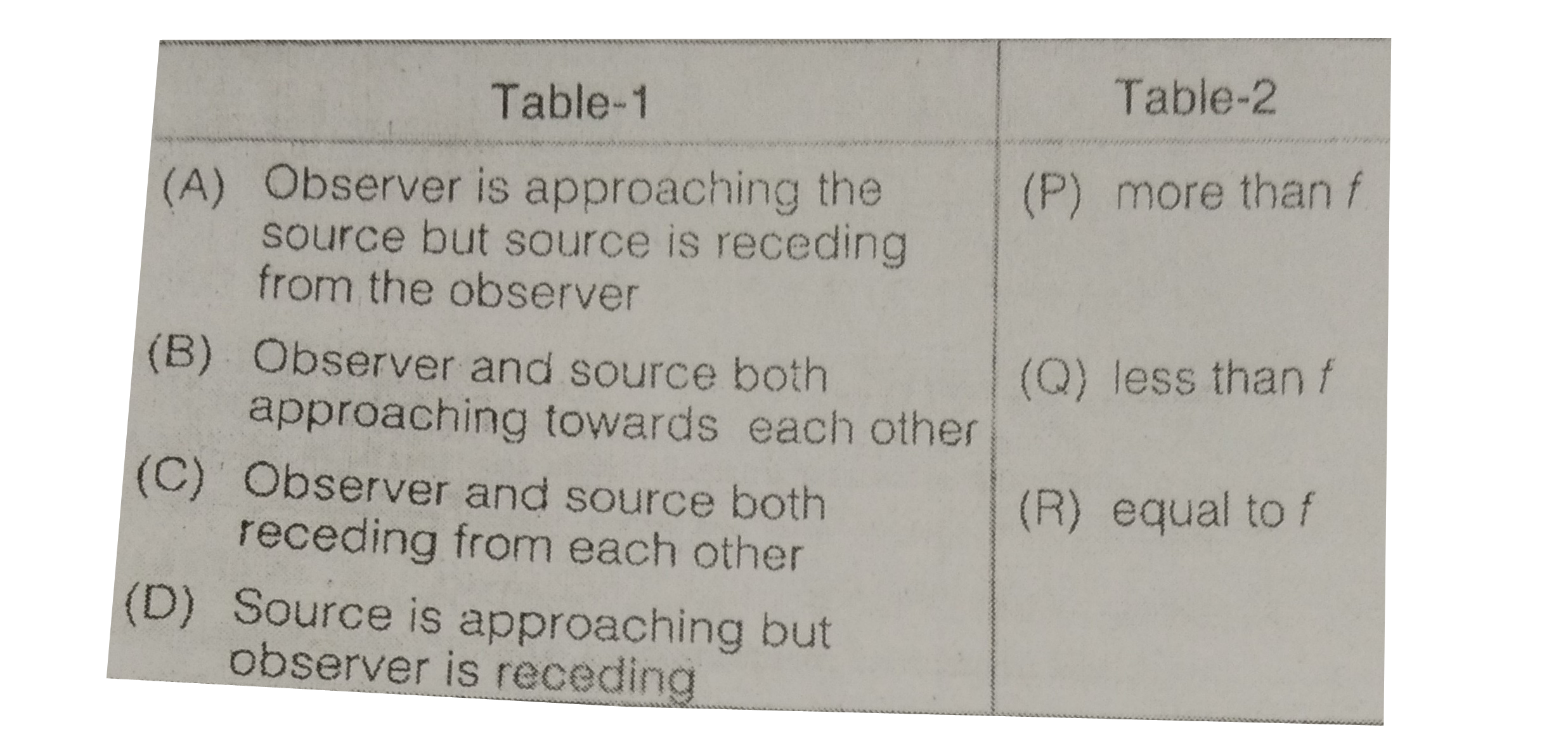The source producing sound and an observer both are moving along the direction of propagation of sound waves. If the respective velocities of sound, source and an observer are v,vs and v0, then the apparent frequency heard by the observer will be (n = frequency of sound)
n(v+vo)v−vo
n(v−vo)v−vs
n(v−vo)v+vs
n(v+vo)v+vs
The correct Answer is:B
Step by step video, text & image solution for The source producing sound and an observer both are moving along the direction of propagation of sound waves. If the respective velocities of sound, source and an observer are v, v_(s) and v_(0), then the apparent frequency heard by the observer will be (n = frequency of sound) by Physics experts to help you in doubts & scoring excellent marks in Class 11 exams.
Updated on:21/07/2023Topper's Solved these Questions
- WAVES AND SOUNDBOOK - ERRORLESS CHAPTER - WAVES AND SOUNDEXERCISE - Musical Sound
32 Videos
- WAVES AND SOUNDBOOK - ERRORLESS CHAPTER - WAVES AND SOUNDEXERCISE - Critical Thinking Questions
51 Videos
- WAVES AND SOUNDBOOK - ERRORLESS CHAPTER - WAVES AND SOUNDEXERCISE - Organ pipe
53 Videos
- VECTORSBOOK - ERRORLESS CHAPTER - VECTORSEXERCISE - Exercise
223 Videos
- WORK , ENERGY , POWER AND COLLISIONBOOK - ERRORLESS CHAPTER - WORK , ENERGY , POWER AND COLLISIONEXERCISE - Self Evaluation Test
19 Videos
Similar Questions
A source of sound emitting a note of frequency 200 Hz moves towards an observer with a velocity v equal to the velocity of sound. If the observer also moves away from the source with the same velocity v, the apparent frequency heard by the observer is
View SolutionA source of sound is moving towards an observer at rest with a speed V = 0.1 times the speed of sound. Find the apparent freuency as heard by the observer if original frequency is 400 Hz.
View Solution
Knowledge Check
A source of sound and a listener both are moving in the same direction,the source following the listener. If the respective velocities of sound ,source and listener are v,vsandv′/s then the ratio of the actual frequency of the source and the apparent frequency as received by the listener is
Av−vlv−vsBv−vsv−vlCv−vlv+vsDv+vsv+vlIf a source of frequency n moving with velocity v crosses a stationary observer, then the change in the frequency of sound heard by the observer will be (velocity of sound = V)
A2nVvV2+v2B2nVv(V2−v2)C2nVv(V+v)D2nVv(V−v)If source and observer both are relatively at rest and if speed of sound is increased then frequency heard by observer will
AIncreasesBDecreasesCCan not be predictedDWill not change
A sound source has frequency f. Source and observer both have same speed.For the apparent frequency observed by observer match the following.

View SolutionIf an observer is moving with uniform velocity v to wards a stationary source of frequency n, and if the velocity of sound in the medium is V, then the apparent change in the frequency of the sound, heard by the observer, is -
View SolutionWhat should be the velocity of a sound source moving towards a stationary observer so that apparent frequency is double the actual frequency (Velocity of sound is v )
View SolutionIf a source emitting waves of frequency f moves towards an observer with a velocity v/3 and the observer moves away from the source with a velocity v/4, the apparent frequency as heard by the observer will be (v= velocity of sound)
View SolutionIf a source emitting waves of frequency f moves towards an observer with a velocity v4 and the observer moves away from the source with a velocity v6, the apparent frequency as heard by the observer will be (v=velocity of sound)
View Solution
